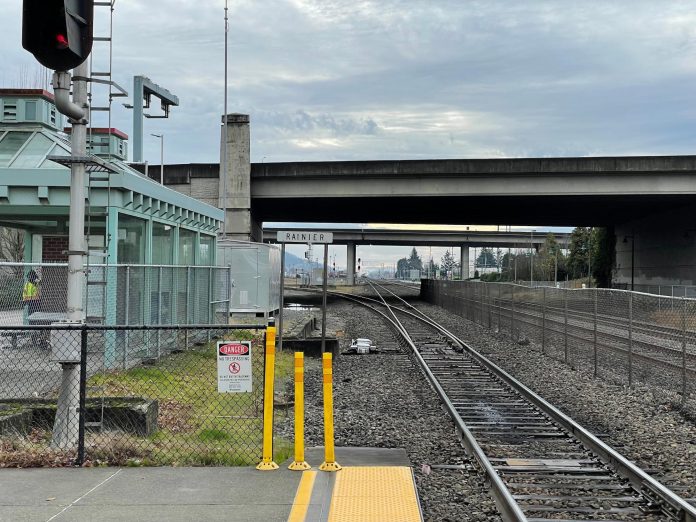
South Sounder’s capital program is headed towards a reset. Sound Transit staff are recommending largely postponing pre-pandemic priorities for longer platforms and trains to handle peak loads, in favor of investments in more trips and extended span of service that could meet rider demand sooner.
At an agency board meeting on Thursday, Sound Transit planner Melissa Flores Saxe offered some insight into the change of priorities. “Data indicates that there may be more demand than Sounder is currently serving for midday on weekdays and weekend service,” she said. “And there may be more demand trips for cities south of Seattle than we are currently serving.”
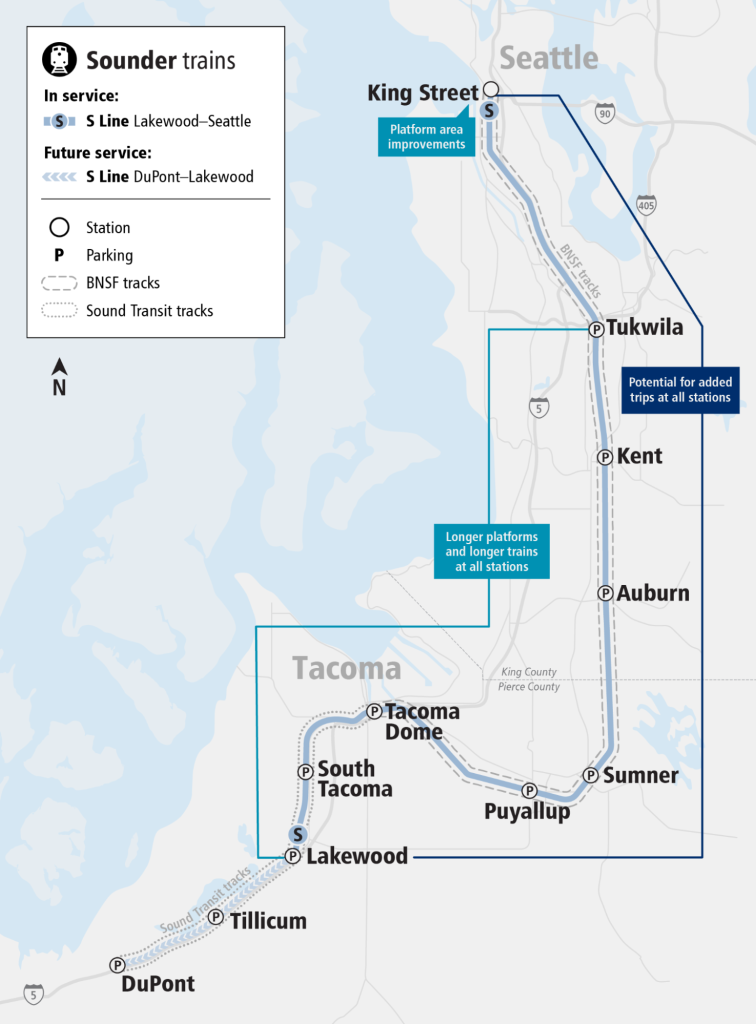
Beyond strong public feedback in surveys indicating support for midday, evening, and weekend service, Sound Transit has looked to mobile phone data to understand general travel patterns in the corridor. That data shows that about 70% to 80% of all weekday travel — across all mode types — happens when there is either limited or no Sounder service. Likewise, the data shows that Saturday travel demand is fairly similar to a typical weekday. On top of this, demographic data from transit riders shows that low-income bus riders make a significant number of trips throughout the corridor during weekday middays.
In early 2020, Sound Transit adopted a strategic plan for the South Sounder (S Line) commuter rail corridor. The plan outlined two key strategies — lengthening trains and adding trips — and the specific investments required to achieve those aims, such as platform extensions, additional coaches, expanded storage and maintenance facilities, and track and signal improvements. But that plan was informed by pre-pandemic travel and ridership patterns that were heavily weighted toward 8-to-5 commuters, and as a result the first priority was longer trains.
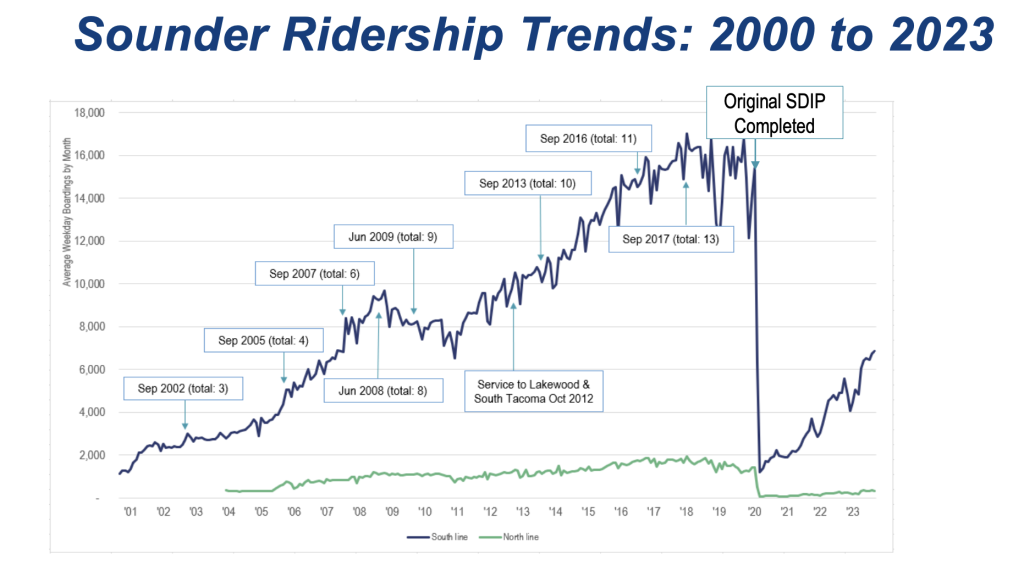
Since the pandemic, transit travel and ridership patterns have shifted significantly. Ridership is less peak-heavy since many white collar workers telecommute a large proportion of the week. Rules in many offices are more flexible about when workers should report to jobsites and how long they should be physically present at the office, with many employers only requiring or encouraging two or three days per week in the office.
Consequently, this has meant spikes in ridership during commuting hours on Tuesdays, Wednesdays, and Thursdays, and relatively sparse commuting the rest of the week. But even the peaks of travel demand during the heaviest ridership days are less extreme than pre-pandemic equivalents, with ridership demand being spread out more across the day.
Surging ridership toward the middle of the week does mean seating on trains is a little harder to come by than on other days, when seats are mostly empty. But even with seven-car trains, ample capacity remains readily available on the busiest days.
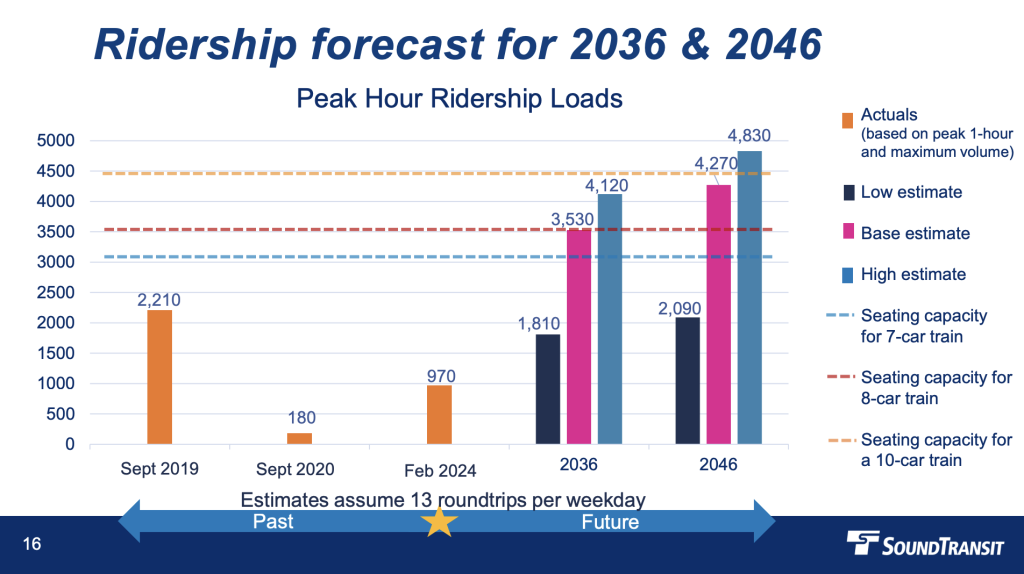
Sound Transit’s recent modeling projects that rider capacity on trains is not expected to become an operational issue until at least 2036. Three ridership growth scenarios were modeled along with differing train car lengths at peak hours. The agency assumes that a medium growth scenario is the most likely.
Consequently, the model shows that increasing trains by one extra car — totaling eight cars per train — could handle ridership demand projected in 2036 under the base scenario. That wouldn’t require any platform expansions, delaying a more capital-intensive solution for capacity. However, 10-car trains with extended platforms might become necessary to meet peak-hour demand projected by 2046 under the base scenario.
Postponing construction of longer platforms, acquisition of a larger number of cars, and additional space to store and maintain cars frees up a significant portion of the $1.35 billion (in 2023 dollars) allocated to the Sound Sounder capital program over the next two decades. Crucially, freed money can be used to fund targeted corridor improvements (e.g., tracks and signals) and purchase of more trip slots from BNSF — which owns the bulk of tracks used on the corridor — throughout the day and later into the evening, and possibly regular weekend service.
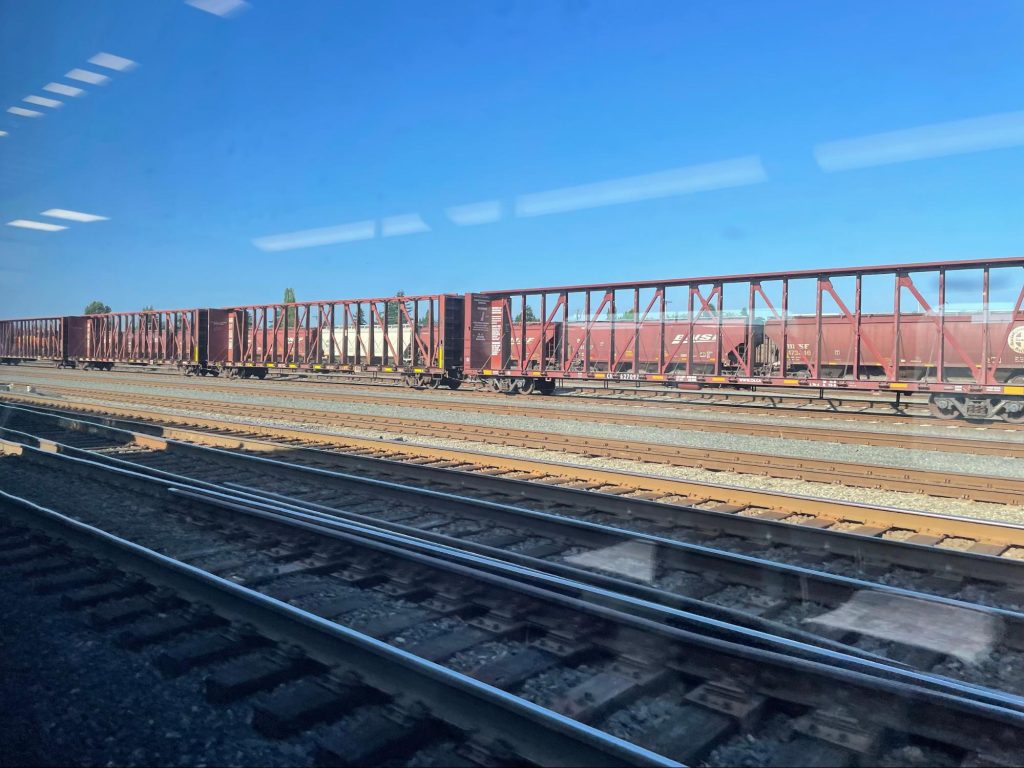
As a result, Saxe recommended that Sound Transit postponing platform extensions and 10-car trains until 2046 and speeding up the timeline on additional trips, increasing service beyond 13 regular weekday roundtrips and special event service.
“We believe additional trips would be supported by the public and would address ridership demand in 2036,” Saxe said. “If we were to engage with BNSF on the possibility of adding new trips, we would continue to track ridership trends as well.”
Saxe added that Sounder capital projects uniquely qualify for Federal Railroad Administration grants and financing, unlike Sound Transit’s other modes. “That may fund the track and signal investments that we require for additional new trips,” she said.
In concluding her remarks, Saxe sought the System Expansion Committee’s informal direction on whether to engage with BNSF about new trips and adjust the South Sounder capital program priorities. In response, several Sound Transit boardmembers expressed excitement and support for a change in capital investment priorities.
“I think it’s a wise investment of time,” said Mayor Jim Kastama of Puyallup. “I think that priority would be towards the weekend trips, as opposed to [weekday] midday, although I have no opposition to the midday.” Kastama added that he’d like to see weekend service prioritized, with morning trips in the direction of Seattle and evening trips coming back south on both Saturday and Sunday.
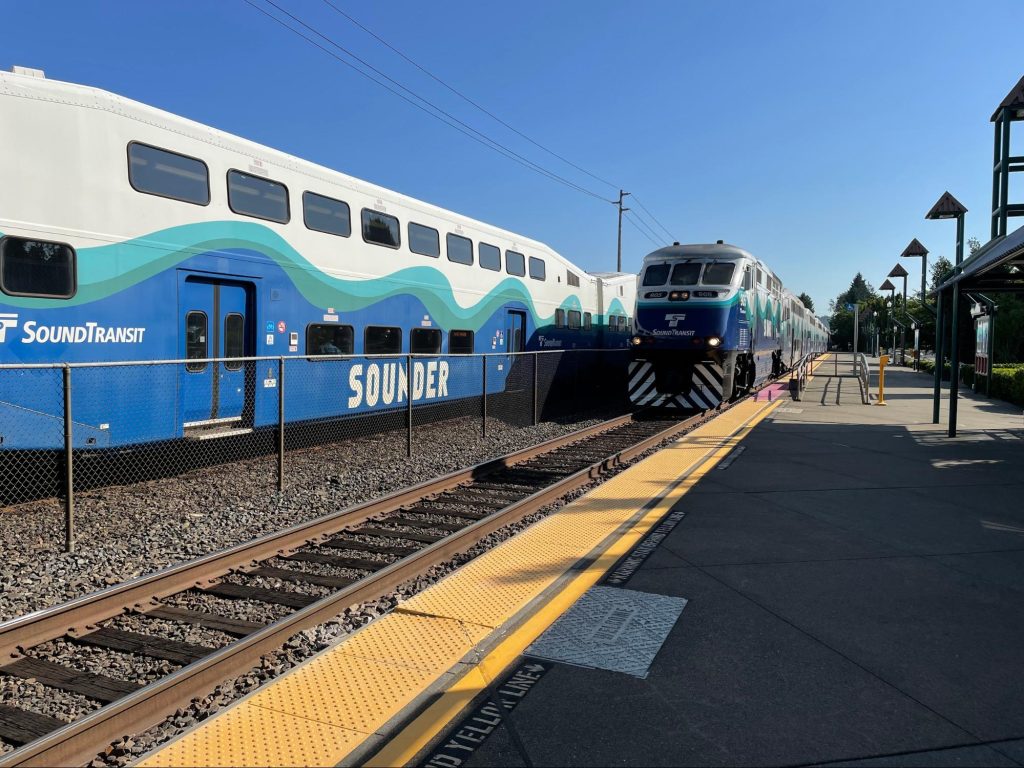
Seattle City Councilmember Dan Strauss was also enthusiastic about more service, recounting how he had to go to Tacoma midday recently, but couldn’t make Sounder work. “This is a great opportunity for us to […] maybe reset or reinvestigate our relationship with BNSF with a goal of being more trips, more often, more days of the week,” he said. “It’s a service that I think a lot of people would like to use more of.”
“I couldn’t support this more,” said Mayor Nancy Backus of Auburn. “I’ve been a fan and a proponent of additional headways, or as I’ve called it, for a long time, turning it into a lifestyle train.” Backus added that she believes that train service is important for work and entertainment travel purposes.
Front-loading South Sounder corridor capital investments to buy more trips can only achieve so much. Resources remain limited because suburban boardmembers like Backus have refused to cancel costly parking projects at stations on the South Sounder corridor, which could free up another $300 million or more in funding for additional service and infrastructure enhancements. The fact that there are far more parking spaces at Sounder facilities than there are train riders now has apparently not changed suburban boardmember priorities for ever more parking.
Nevertheless, support from the boardmembers for evaluating more trips is a positive development. This will allow Sound Transit to coordinate and negotiate with BNSF on what it would take to add more trips in the coming years, and possibly spread out existing service by reallocating peak-hour trips.
The timing also seems ripe given that BNSF has publicly staked out its principles for additive passenger rail service as part of the Amtrak Cascades Service Development Plan process and has been coordinating with the Washington State Department of Transportation (WSDOT) on specific corridor improvements. Some corridor improvements that WSDOT is weighing for Cascades service could directly overlap and benefit Sounder, so there are real opportunities for synergy ahead. Timelines, budget demands, and whether either agency can secure enough BNSF easements to make their dreams come true remain unclear.
But, if Sound Transit is successful in getting reasonably affordable agreements in place for incremental additive S Line service, that could help Sounder begin to evolve beyond commuter rail into a much more useful type of service: regional rail. Time will tell.
Stephen is a professional urban planner in Puget Sound with a passion for sustainable, livable, and diverse cities. He is especially interested in how policies, regulations, and programs can promote positive outcomes for communities. With stints in great cities like Bellingham and Cork, Stephen currently lives in Seattle. He primarily covers land use and transportation issues and has been with The Urbanist since 2014.


